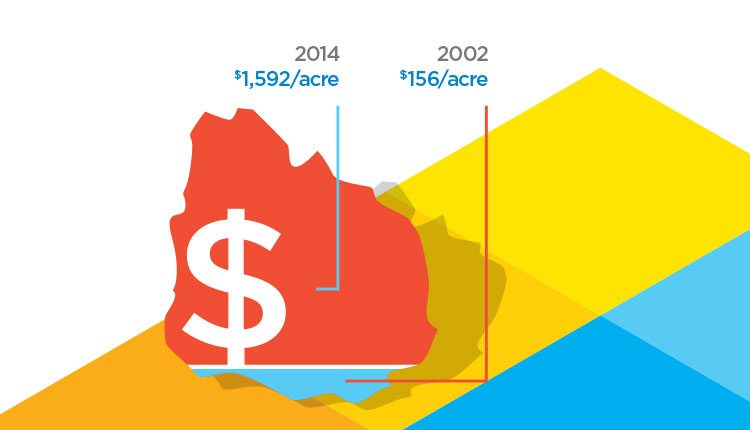Uruguay has a population of nearly 3.5 million and a land base of more than 67,000 square miles, of which 93 percent is suitable for agriculture — that’s 40.5 million acres (16.4 million hectares).
Historically, Uruguay has been a cattle country and it still is. With more than 12 million head of cattle, beef production uses 78 percent of the agricultural land. This means pastures and forages such as clovers, ryegrass, fescues and alfalfas are very important.
Agricultural Land Use
Exports of Soybean Seed
YearMillionTons
| 2005 | $3.4 | 17,644 |
| 2006 | $0.0 | 24 |
| 2007 | ||
| 2008 | $22.3 | 65,142 |
| 2009 | ||
| 2010 | $4.3 | 3,039 |
| 2011 | $5.8 | 4,035 |
| 2012 | $9.7 | 6,628 |
| 2013 | $6.5 | 4,251 |
| 2014 | $4.7 | 2,966 |
The country exports enough food for 28 million people, but has the potential to produce food for 50 million.
Agribusiness accounts for 75% of all goods exported by Uruguay in 2014.
In 2014, the value of agricultural exports exceeded $7.5 billion (USD) — led by grains, especially soybeans, beef, forestry and dairy products.
ADM, Bunge, Cargill and Louis Dreyfus have facilities here.
40.5 million acres are suitable for agricultural use, about 93% of the country’s total land base.
From 2002 to 2014, Uruguay’s GDP grew 5.4% per year, of which agribusiness accounted for 12.6% in 2014.
Land Value In Uruguay
Sources: Uruguay XXI based on the Central Bank of Uruguay and LE Group Industries.



















